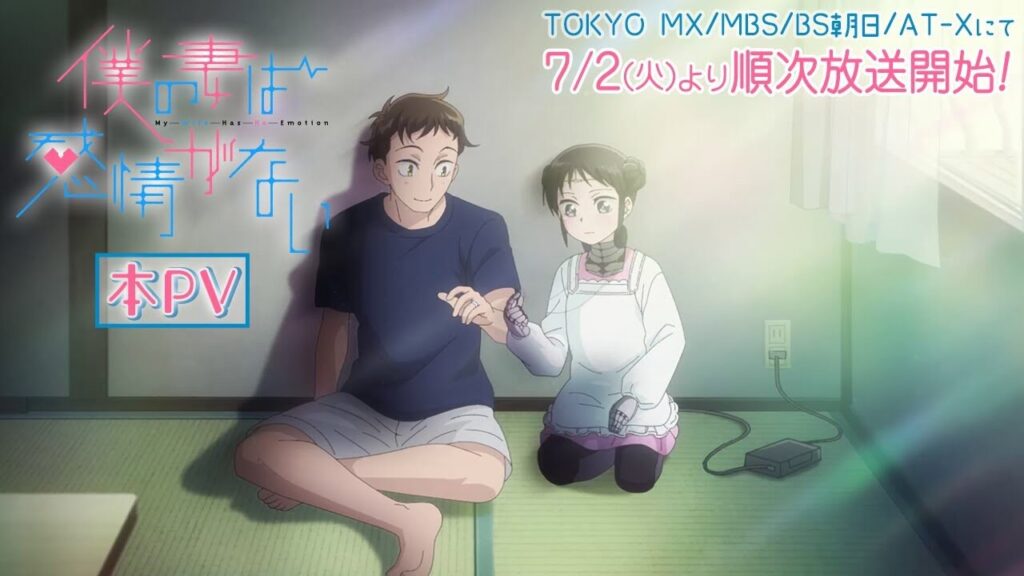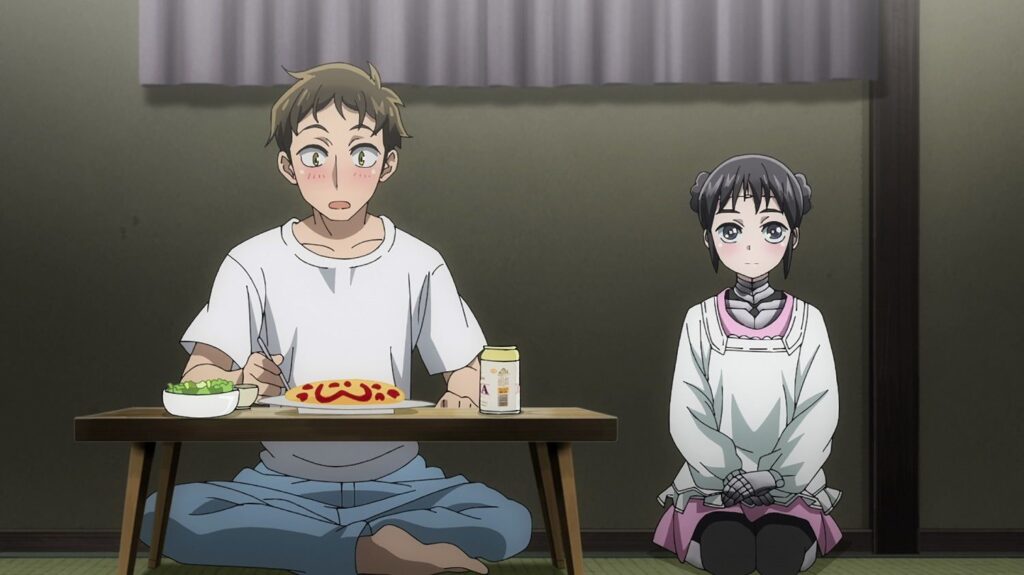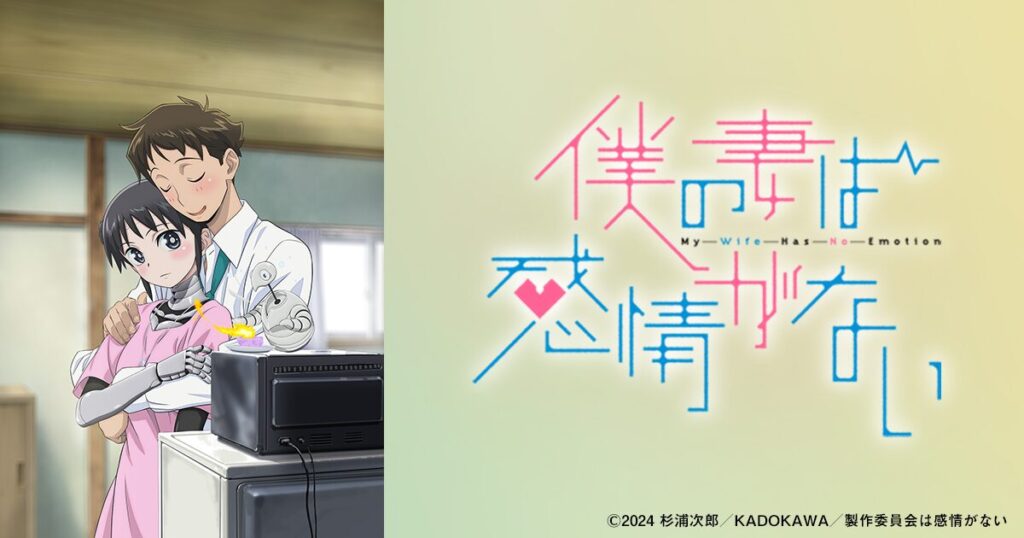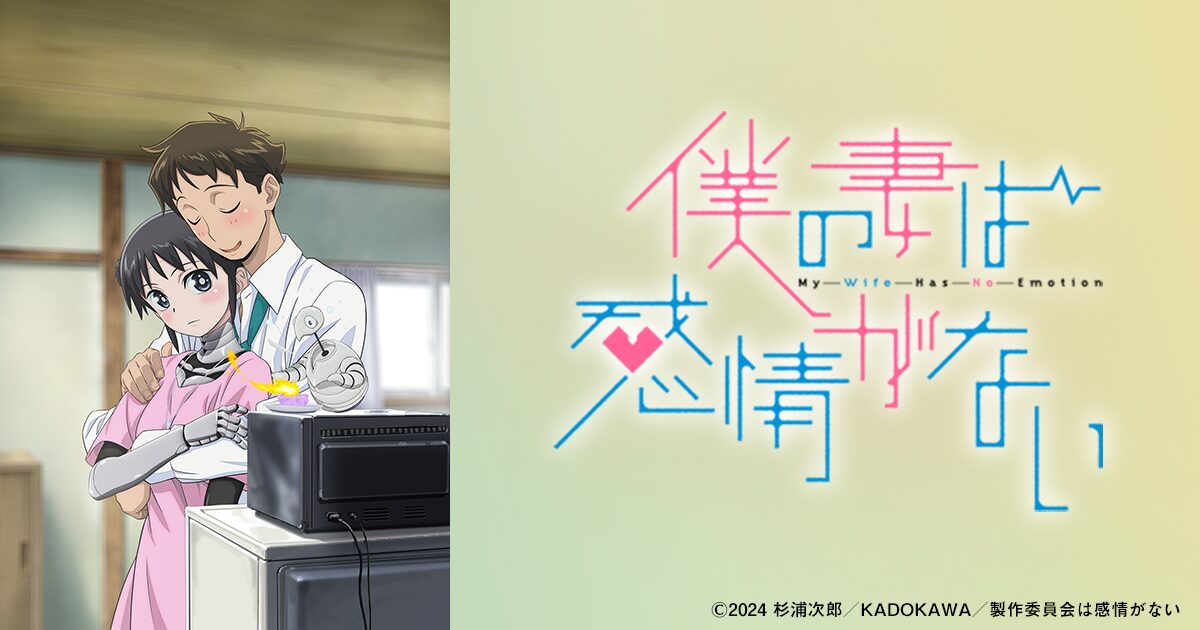1. Introduction
“My Wife Has No Emotion” (Japanese: 僕の妻は感情がない) is a unique anime adaptation based on the manga by Jirou Sugiura.
It explores the life of a man and his robot wife in a futuristic world, combining elements of romance, comedy, and philosophical musings on artificial intelligence and human emotions.
This review will delve into the story’s overview, character dynamics, production details, and my personal impressions of the series.
2. Overview of the Story
The story revolves around Takuma, a busy salaryman who purchases a household robot named Mina CL to help with daily chores.
Mina is a low-cost version of the “Super Mina,” a top-tier home assistant robot, primarily designed for cooking and dishwashing.
Despite being a robot, Mina exhibits some behaviors that deviate from her programmed functionality—such as staring at a ring Takuma gave her for over 30 minutes.
These subtle actions hint at something beyond mere programming, as Mina and Takuma’s relationship evolves from a simple owner-appliance dynamic to something deeper and more complex.
The unique aspect of the story is its exploration of the concept of love and companionship between a human and a machine, as well as what it means for a robot to exhibit human-like behaviors.
Mina, who was sold off by her previous owner for being too “unrealistic” in her expressions and behavior, finds a new home with Takuma.
She comes to appreciate her “defective” state because it allowed her to meet Takuma, highlighting themes of acceptance and growth.
3. Highlights of the Show

Here are some standout aspects of the series:
- Character Depth and Relationships: The evolving relationship between Takuma and Mina is the heart of the story. Takuma initially buys Mina for practical reasons, but he soon finds himself drawn to her peculiar behaviors that seem almost human. Mina, despite being an appliance, starts to develop a deeper connection with Takuma, raising questions about what constitutes love and emotional attachment. This development is both heartwarming and thought-provoking.
- Exploration of AI and Humanity: The show raises intriguing questions about the nature of AI and what it means to have emotions. Mina is supposed to be emotionless, yet her actions suggest otherwise. The concept of a robot developing a sense of self or engaging in behaviors outside its programmed parameters touches on themes often explored in science fiction, but in a domestic and relatable setting.
- Humor and Light-hearted Moments: Despite its philosophical undertones, the anime is filled with light-hearted and comedic moments, especially involving Takuma’s younger sister, Akari Kosugi. Akari, who is a fan of “inter-species romance,” often adds humor to the story with her curiosity about her brother’s unique relationship with Mina. Her dynamic with Mina also contributes to the show’s exploration of human-robot relationships.
- Contrast with the “Super Mina” Model: The introduction of Super Mina, the superior model that Mina is derived from, adds another layer to the story. Unlike Mina, Super Mina is designed to be the pinnacle of household assistance—efficient and flawless. However, it is this lack of “flaws” that makes Mina’s character stand out more and makes her relatable to both Takuma and the viewers.
4. Personal Thoughts and Impressions

Watching this series, I found several elements particularly memorable:
- Most Striking Scenes: One of the most striking scenes is when Mina begins to perform tasks that are not directly related to her programming, such as staring at her ring for a prolonged period. These small actions bring depth to her character and make viewers question whether she truly lacks emotions or if she is evolving beyond her original design.
- Empathy for the Characters: Takuma’s struggle to reconcile his feelings for a robot designed without emotions brings a unique perspective to the theme of love. His interactions with Mina are both touching and comical, reflecting his genuine affection for her. Mina’s subtle growth, from a mere household robot to a partner who contemplates her existence, also adds emotional weight to the story.
- Underlying Message: The anime goes beyond a simple romantic comedy to address deeper questions about the nature of love, companionship, and what it means to have a soul. It challenges viewers to consider whether machines, programmed to mimic human behavior, can truly understand or feel emotions.
- Comparison with Other Sci-Fi Romance Anime: Compared to other anime that explore relationships between humans and AI, such as Plastic Memories or Chobits, My Wife Has No Emotion takes a more subtle, everyday approach. It focuses on the mundane aspects of life with a robot partner, making it both unique and relatable to a broader audience.
5. Areas for Improvement

While the series has many strengths, there are a few areas where it could be improved.
Some viewers might find the pacing a bit slow, especially during scenes that focus on mundane domestic activities.
Additionally, more backstory for certain characters, such as Takuma’s past and his initial reasons for living alone, would add depth and context to the narrative.
6. Conclusion

Overall, “My Wife Has No Emotion” is a charming and thought-provoking anime that explores the complexities of love and companionship in a world where AI and humans coexist.
Its mix of humor, philosophy, and relatable daily life makes it a unique addition to the genre.
I highly recommend it to fans of sci-fi romance and those interested in stories that explore the boundaries between technology and humanity.
7. Enjoying the Series Further
For those who enjoy the anime, I recommend reading the original manga for additional depth and context.
Additionally, exploring other anime that tackle similar themes, such as Time of Eve or Eve no Jikan, can offer a broader understanding of the genre’s exploration of AI and human emotions.






コメント